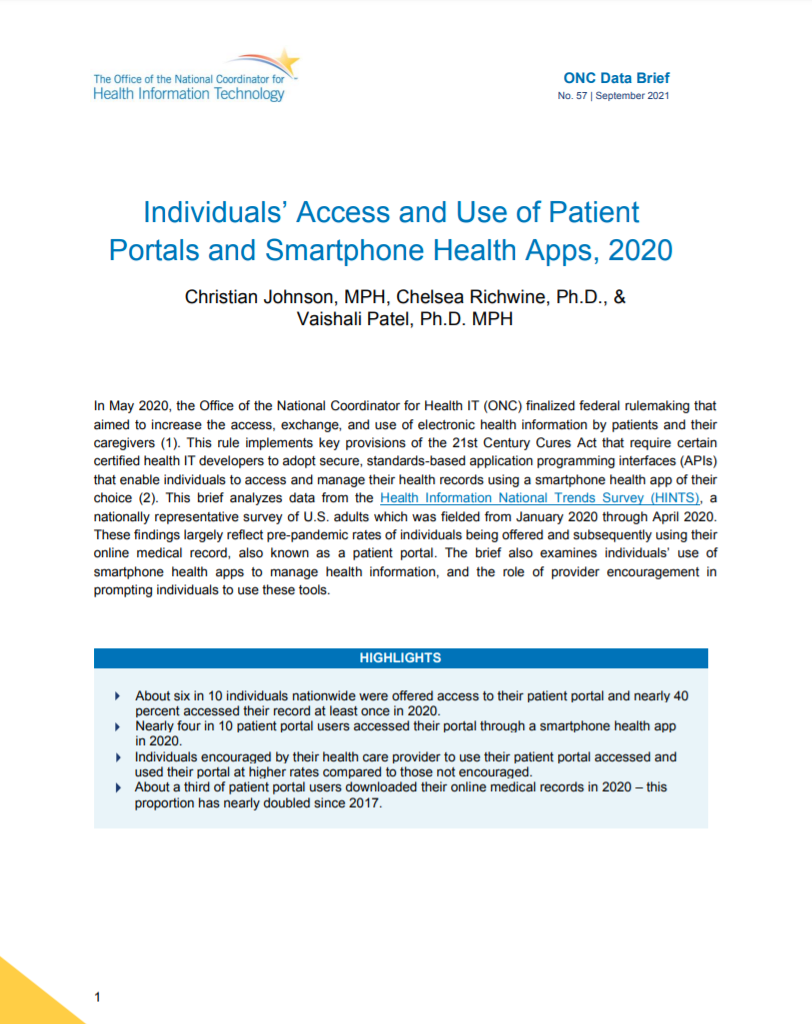
In May 2020, the Office of the National Coordinator for Health IT (ONC) finalized federal rulemaking that aimed to increase the access, exchange, and use of electronic health information by patients and their caregivers (1). This rule implements key…
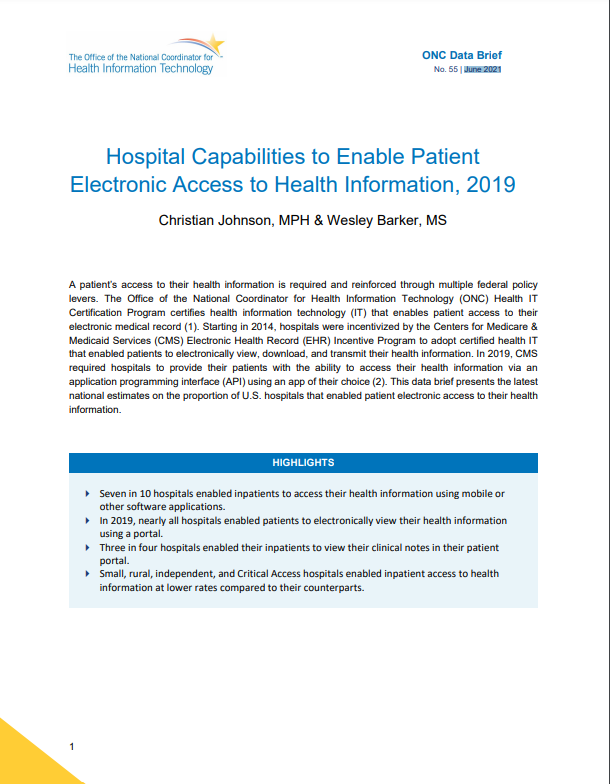
A patient’s access to their health information is required and reinforced through multiple federal policy
levers. The Office of the National Coordinator for Health Information Technology (ONC) Health IT
Certification Program certifies health…
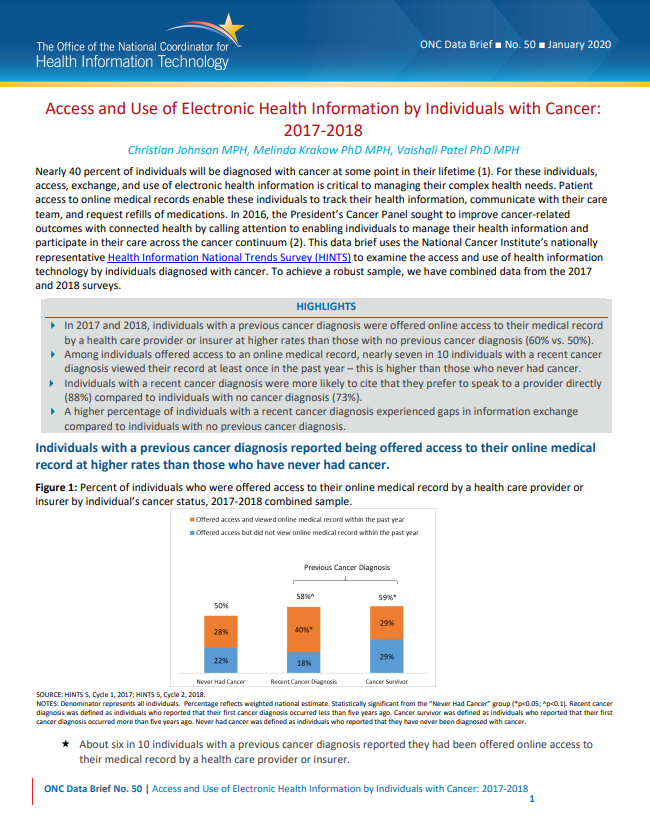
Nearly 40 percent of individuals will be diagnosed with cancer at some point in their lifetime. For these individuals, access, exchange, and use of electronic health information is critical to managing their complex health needs. Patient access to…
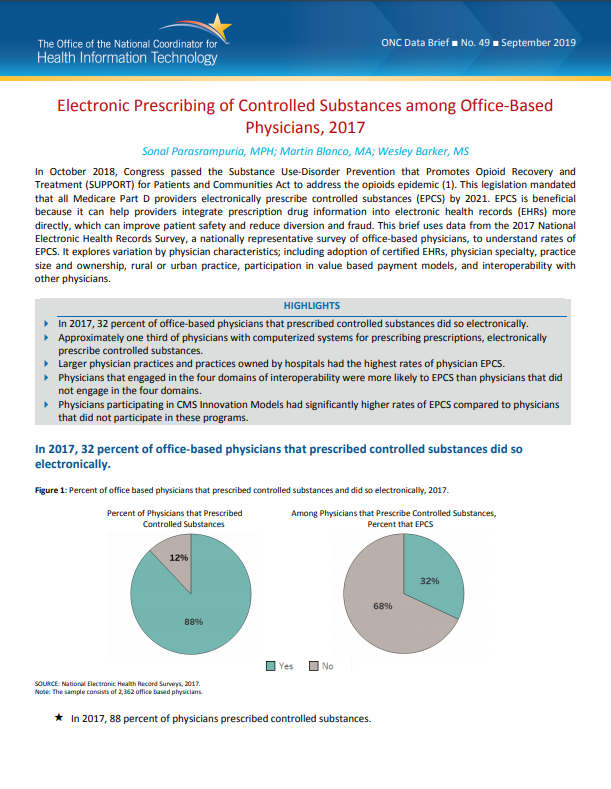
EPCS is beneficial because it can help providers integrate prescription drug information into electronic health records (EHRs) more directly, which can improve patient safety and reduce diversion and fraud. This brief uses data from the 2017…
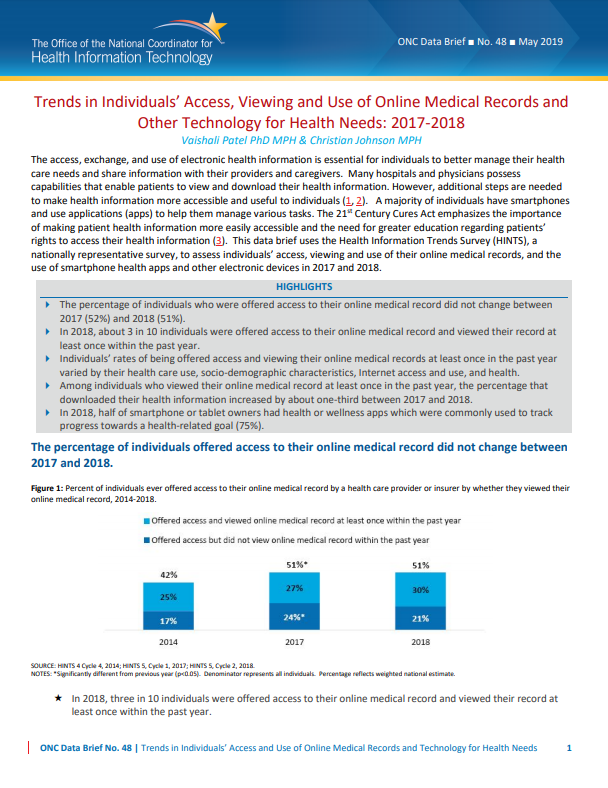
The access, exchange, and use of electronic health information is essential for individuals to better manage their health care needs and share information with their providers and caregivers. Many hospitals and physicians possess capabilities that…

With widespread adoption of EHRs, policy is now shifting towards the use of EHR data. EHR data can improve patient care by giving providers access to evidence based tools that assist with decision making and facilitating clinical practice by…
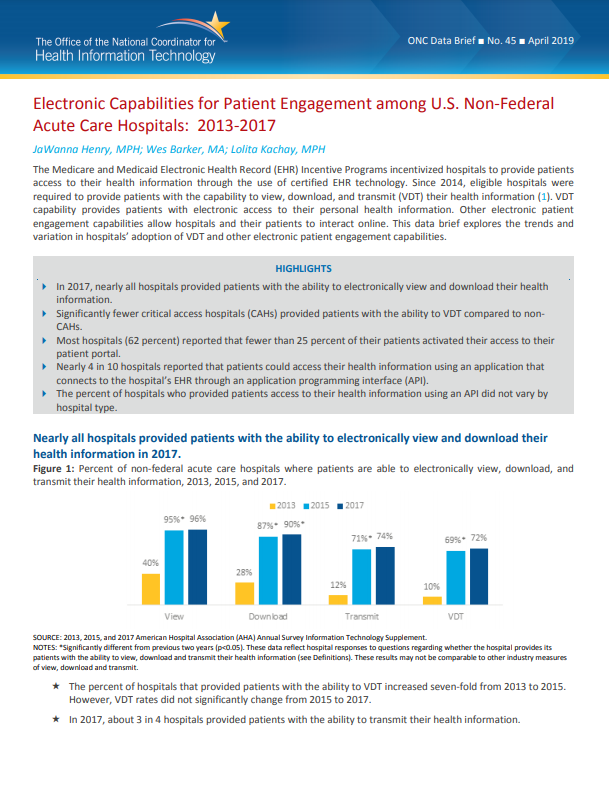
The Medicare and Medicaid Electronic Health Record (EHR) Incentive Programs incentivized hospitals to provide patients access to their health information through the use of certified EHR technology. Since 2014, eligible hospitals were required to…
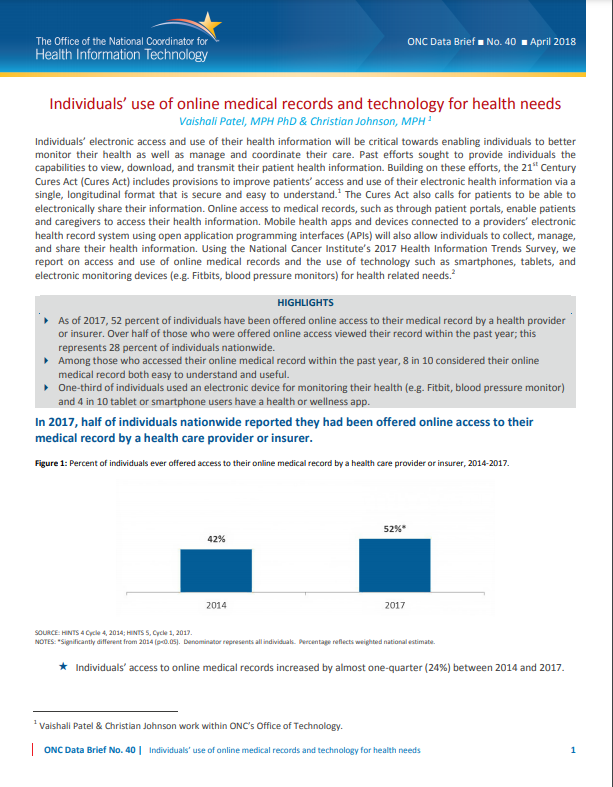
Online access to medical records, such as through patient portals, enable patients and caregivers to access their health information. Mobile health apps and devices connected to a providers' electronic health record system using open…
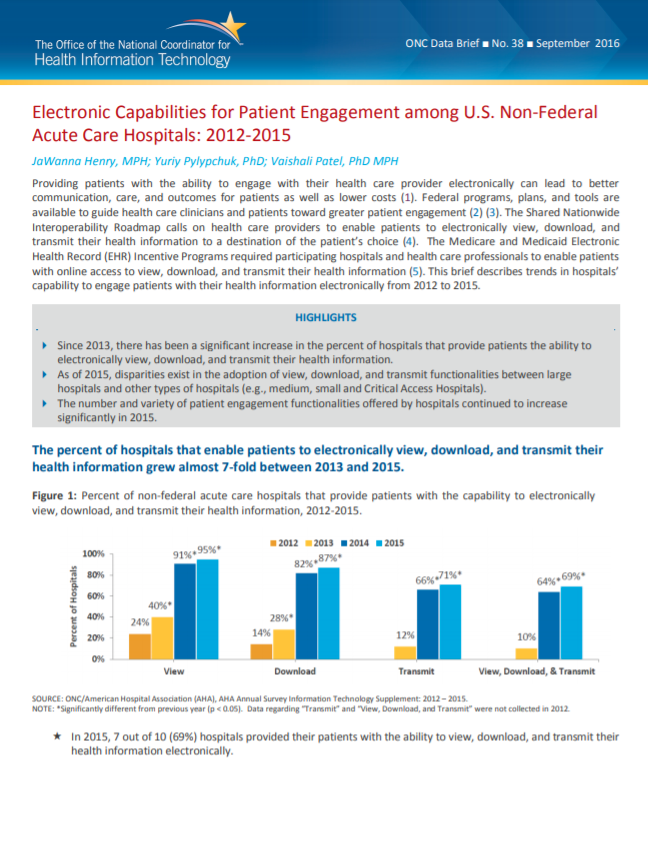
This ONC Data Brief describes trends in hospitals capability to engage patients with their health information electronically from 2012 to 2015. The percent of hospitals that enable patients to electronically view, download, and transmit their health…
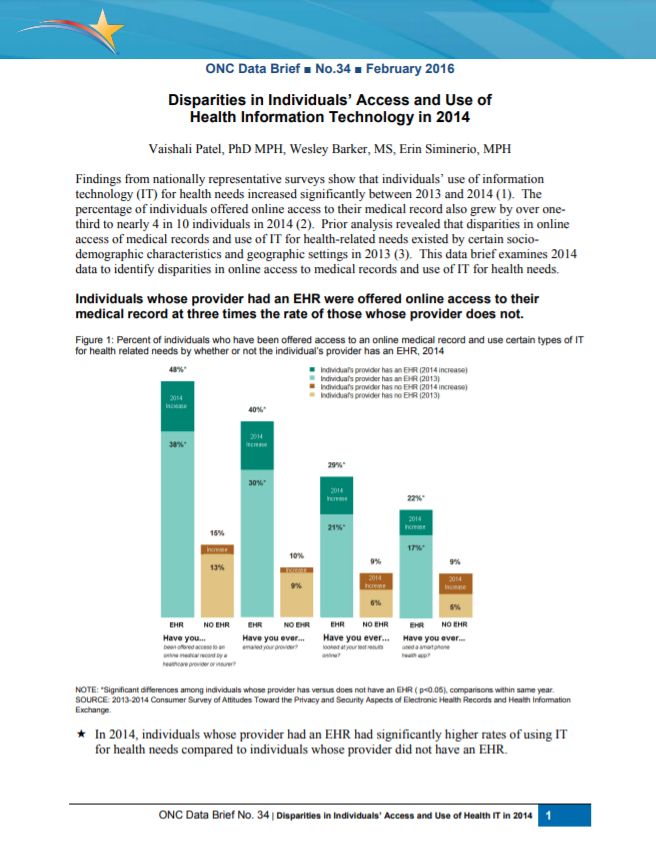
Findings from nationally representative surveys show that individuals' use of information technology (IT) for health needs increased significantly between 2013 and 2014. Prior analysis revealed that disparities in online access of medical…
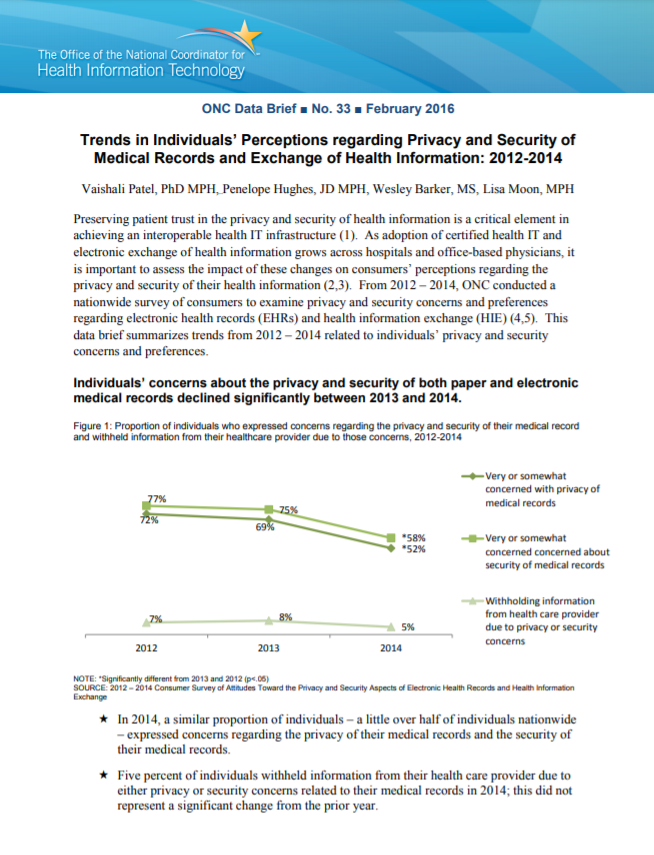
Preserving patient trust in the privacy and security of health information is a critical element in achieving an interoperable health IT infrastructure. As adoption of certified health IT and electronic exchange of health information grows across…
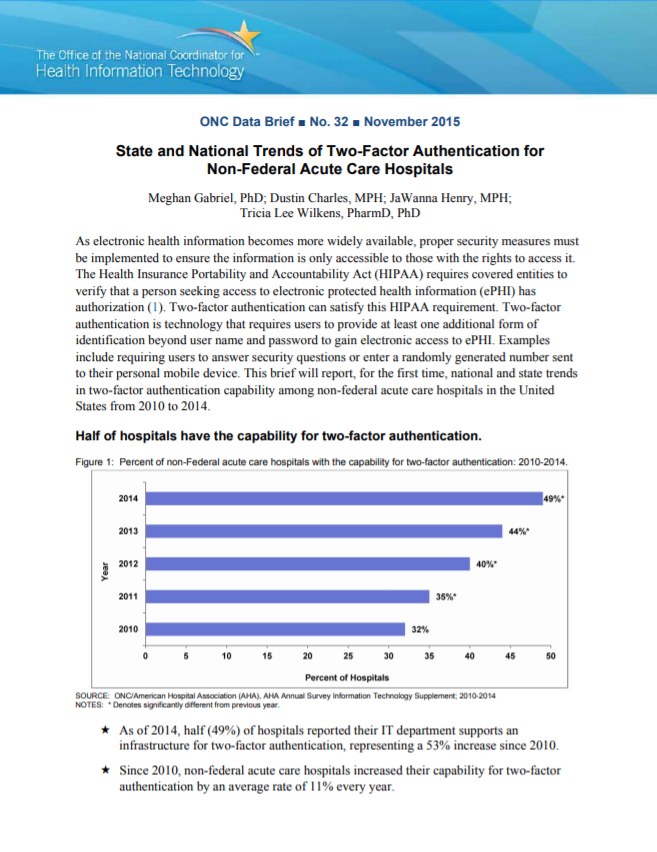
As electronic health information becomes more widely available, proper security measures must be implemented to ensure the information is only accessible to those with the rights to access it. The Health Insurance Portability and Accountability Act…
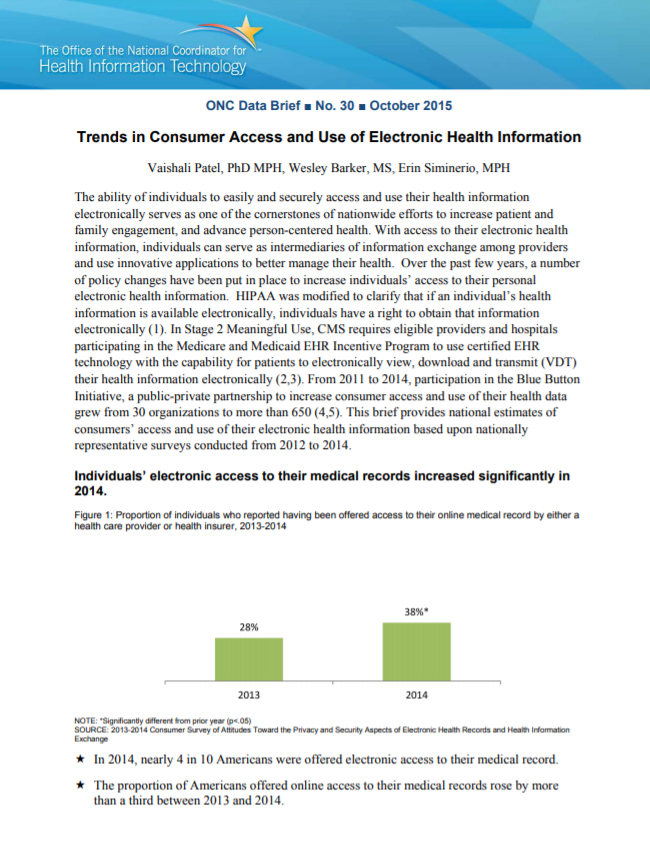
The ability of individuals to easily and securely access and use their health information electronically serves as one of the cornerstones of nationwide efforts to increase patient and family engagement, and advance person-centered health. With…
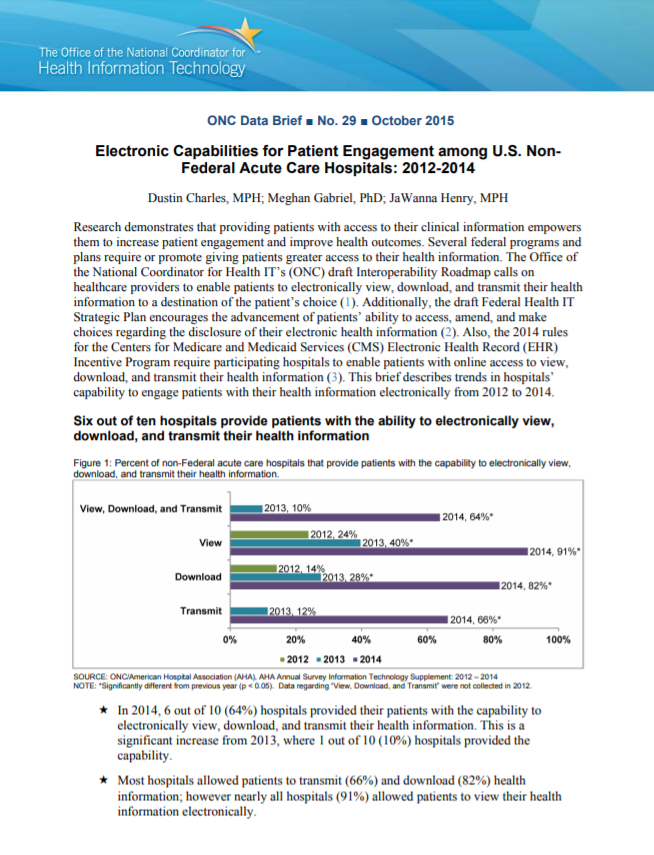
Research demonstrates that providing patients with access to their clinical information empowers them to increase patient engagement and improve health outcomes. Hospitals, which play a critical role in coordinating patient care with a variety of…
![Individuals' Perceptions of the Privacy and Security of Medical Records [pdf]](/sites/default/files/2021-08/db-27.png)
To assess the growing impact of EHR adoption on individuals' privacy and security concerns, this data brief examines whether privacy and security concerns have increased with increased rates of EHR adoption between 2012 and 2013. .
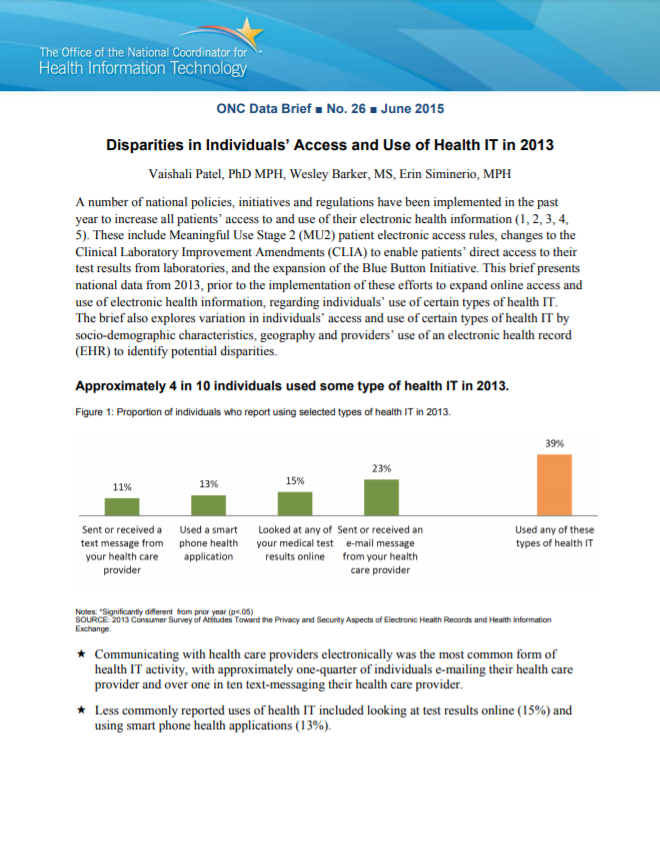
This brief presents national data from 2013, prior to implementation of Meaningful Use Stage 2 patient electronic access rules, changes to CLIA, and expansion of the Blue Button Initiative, regarding individuals' use of certain types of health…
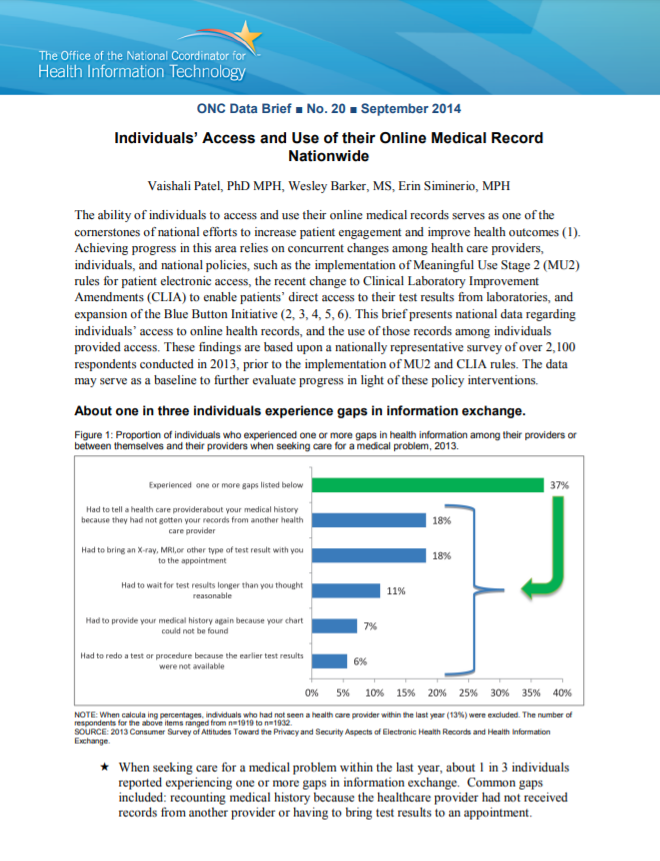
The ability of individuals to access and use their online medical records serves as one of the cornerstones of national efforts to increase patient engagement and improve health outcomes. This brief presents national data regarding individuals…
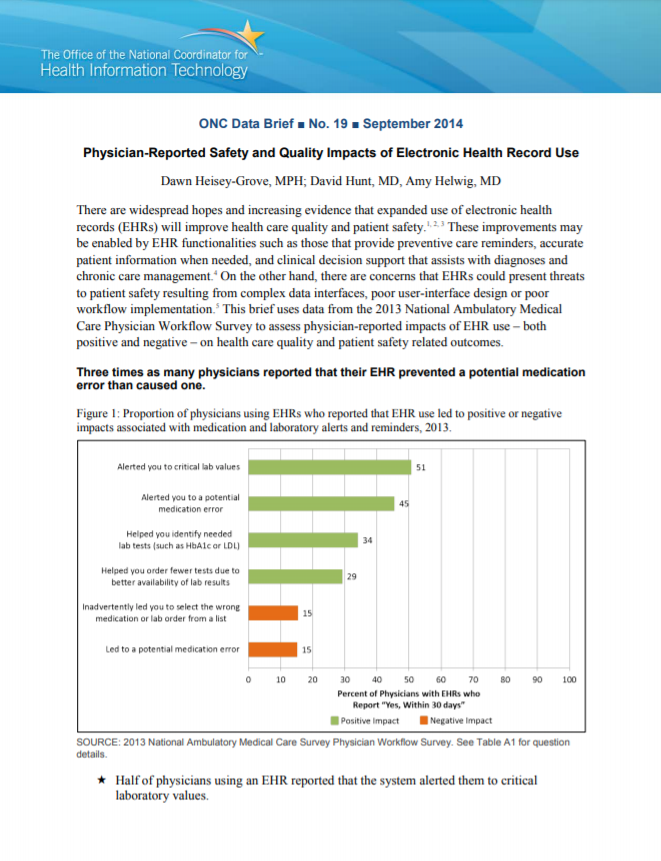
This brief uses data from the 2013 National Ambulatory Medical Care Physician Workflow Survey to assess physician-reported impacts of EHR use, both positive and negative, on health care quality and patient safety related outcomes. .

